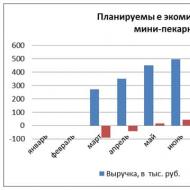
How to Cook on a Lodge Charcoal Grill. Tips for using a barbecue - lighting, cooking, care. How are charcoal briquettes different from charcoal?
Cooking on a charcoal grill - what could be cooler? Today we are introducing you to the Weber Master-Touch charcoal grill from the American Grills company. The grill is an outdated design on which meat dries and vegetables burn, and the future belongs to charcoal grills with a lid. The lid is the whole secret of cooking delicious grilled meat.
Let's figure out together how a charcoal grill works and cook the best marbled beef steaks in the world.
2. So, we have a Master-touch model with a diameter of 57 cm with a set of accessories. Friends and acquaintances are invited to visit, including such famous bloggers as frantsouzov
And skitalets
for my expert assessment of not only the grill, but also the house I built. The grill is sold unassembled, I already assembled it the day before in about 30 minutes. Serge carefully studies the instructions and gives advice on ignition.
3. To ignite coals, it is most convenient to use a starter. We set fire to dry fuel (in principle, you can replace it with several sheets of crumpled newspaper).
4. And install it at the base of the starter, into which coals were previously poured. It is more correct to use a starter for ignition, because... it allows you to heat the coals faster than if you light them directly on the grill grate. As soon as the smoke stops, the coals are ready.
5. While the coals are lit in the starter, let's get to the meat. This is our first experience cooking steaks, so for now we are following the recommendations that were given to me in advance. One of them is that the meat must be removed from the refrigerator an hour before cooking so that it warms up to room temperature. For meat, I bought marbled Primebeef beef from the Voronezh region and Lipetsk marbled meat. I liked the first one more, and this despite the fact that it is a little cheaper.
6. Pour the heated coals onto the lower grill grate.
7. And close the lid. Ventilation holes on the top allow you to regulate the amount of air and therefore control the temperature under the lid. The first time you start the grill, it is recommended to warm it up for 30 minutes.
8. An exciting moment - our first steaks. As they explained to me, properly marbled meat is “ready” already when it is on the shelf in the store, and it is difficult to spoil it during cooking. But their bad meat will not make a good steak. The thing about steaks is that you don’t need anything other than meat to cook them. A few minutes before placing the pieces on the grill, you can salt and add a little pepper (yeah, with the first steaks I went too far with pepper) - that’s it, you don’t need to do anything else. You can also lightly coat it with olive oil so that the meat does not burn on the grill, but I think this is not necessary.
9. Cooking steak is very simple. First, fry the pieces of meat on each side for about 30 seconds with the lid open (maximum air flow - maximum heat), then cook on each side for about 5 minutes with the lid closed. Cooking time depends on the thickness of the piece and the required degree of frying. Yummy!
10. After a couple of minutes, all the cooked meat disappeared. Let's make the second batch. This is the so-called Ramp Steak, I have not yet understood the parts of beef very well, but at a price of 700 rubles per kilogram, I really liked this meat.
11. Meanwhile, the guests are studying the built house with interest. Soon there will be a green lawn on the roof, and next to the usual stairs I will build an elevator.
12. Besides grilled meat, you can cook anything you like. Throw in the sliced zucchini and potatoes.
13. We ate all the meat again, next time.
14. Incredibly delicious. The main feature of grilling is that it requires minimal attention from a person - you throw in a raw piece of meat, and after a few minutes you take out the cooked one.
15. Another of the most important advantages of the grill over the classic barbecue is the waste-free use of coals and the ash cleaning mechanism. In the lower bowl there are three rotating blades, which, firstly, are used to regulate the air flow, and secondly, they allow the container to be cleared of ash into a special bowl. Once you've cooked your food, you simply close the bottom and top vents and the combustion stops. And you don't need to fill anything with water. Next time you can reuse the unburnt coals.
16. We took a short break and went to the river.
17. And we move on to the next stage - preparing shish kebab on skewers using a special holder. Any unburnt coals can be put back into the starter and re-ignited.
18. There is a temperature sensor on the lid that allows you to control the temperature. Heated up the grill to 270 degrees! This is when using special branded coals; they say that such a high temperature cannot be achieved with simpler and cheaper coals.
19. Bloggers on the roof :)
20. Cooking barbecue is as simple as cooking steaks. Place the skewers and cover with a lid.
21. Fragrant smoke began to rise. Periodically turn the skewers.
22. Done! The meat does not burn, does not dry out, and the lid also protects from the wind. An indicator of tasty cooked meat is when it is tasty on its own without any ketchup or mayonnaise.
In summary, a grill is a vital thing in a country house. It would seem that the whole secret is in the big round lid, but what is the result!
In general, well, this construction site, I’ll go and cook myself some more steaks.
Reality: You're simply starting to cook on coals that haven't reached the optimal temperature. Because of this, cooking may take longer.
Work on mistakes: Please be patient. Black coals can give good heat, but in the future it will increase to hellish levels. Temperature is a key feature of grilling, and waiting for the coals to warm up means protecting yourself from various surprises.
Mistake #3: You didn't preheat the grill.
Expectation: The fire is hotter than hell, you can cook right now!
Reality: The fire can produce quite a bit of heat - these are infrared waves that you can feel if you put your hand near the grill. But the grill itself has not yet warmed up enough, which means that the meat will not be affected by the heat coming directly from the grill. Instead of getting a nice, crisp pattern, your meat will sit on a cold grill and will likely be difficult to tear off. Instead of simply flipping the steak, you will tear it in half.
Work on mistakes: Once the fire has burned down, close the grill and let it preheat for at least 10 minutes. On a hot grill, meat is much less likely to stick to the grate.
Heated grills are much easier to clean, which brings us to...
Mistake #4: You forgot to clean the grill.
Expectation: Fire will destroy everything. Slightly burnt food will become even more flavorful. No one will notice.
Reality: The chicken you grilled was seasoned with the pork chops you cooked yesterday. And the asparagus you roast tomorrow will have the flavor of three whole ingredients! The residue will snowball until the whole chop or turkey finally sticks to it.
Work on mistakes: Just wash those grates. All you need is a brush and a small amount of cleaning product.
By the way, a hot grill is much easier to clean than one that has already cooled down (for example, at the moment when you decide to sit with guests)
Mistake #5: You use too much direct heat.
Expectation: I like meat. Meat loves fire. I love a big piece of meat over high heat. The higher the heat, the better the piece is fried.
Reality: If the heat is too high, the steak will begin to char before it reaches medium rare in the center. In desperation, you begin to move the piece around the grate, but the temperature is the same everywhere (and equal to hellish) 
Work on mistakes. Distribute the coals so that you have two zones. To do this, ½ of the grill must be left either completely without coals, or distributed in a thin layer. On the side with coals you fry the meat, on the colder side you finish cooking.
Mistake #6 You open and close the lid too often.
Expectation: Is the meat ready yet?... Nno. And now?...Nnno. Maybe now?….Nnnno. In general, you understand what we are talking about. This is an irresistible desire to know what is going on with the pork chop.
Reality: If you open a gas grill too often, this will lead to a sharp drop in temperature (longer, longer wait for your piece of meat). With a charcoal grill, the opposite is true - oxygen will help ignite the coals and the meat can burn.
Work on mistakes: Be patient. Cooking on the stove allows for turning at least every second. But by lifting the grill lid you change the temperature.
Mistake #7: You think awesome flames make for equally awesome meat.
Expectation: If the only difference between cooking at home and outdoors is over an open fire, then why not let your burgers and steaks get a good sear right in the flames? 
Reality: Due to open fire, the surface of the meat is charred, acquiring a specific color and taste.
Work on mistakes: Combustion requires a combination of three factors: fuel, energy and oxygen. Melting fat that ignites from hot coals causes short-term flashes of flame. Trimming the excess can solve some of this problem, but you probably don't want to do this on a well-marbled steak or juicy cutlet. The easiest way to solve this problem is to simply move the meat to the cool side of the grill.
What if you have no wiggle room? There are two options left. Reduce the amount of energy or block the access of oxygen. You can add water so that some of the energy goes to evaporation, but who needs rising soot?
At this stage, the easiest way is to do what you will do anyway sooner or later - close the lid. In just a few seconds the flame will go out on its own.
Mistake No. 8. Valves were invented for decoration.
Expectation: What can these little things do with a huge flame?
Reality: By changing the position of the fan, you can adjust the optimal air supply.
Work on mistakes: Access to oxygen is a determining factor when using a grill. Too much air will cause a fire, not enough will prevent them from burning. Adjusting the upper and lower valves will allow you to adjust the air access. If you are cooking chicken or ribs at a low temperature, leave them covered. Grilling a burger patty? Open by raising the temperature (just don't let the flame get too hot).
Mistake #9: Adding the sauce too early!
Expectation: The sooner I add the sauce, the more flavorful the dish will be! I'll apply several layers at once!
Reality: The meat hasn't finished cooking yet, but the sauce is already starting to burn. Your guests are awkwardly trying to peel the burnt crust off what should have been chicken. But the bitterness still remains.
Work on mistakes: The barbecue sauce will not absorb into the meat no matter when you add it. Therefore, it should be added at the very end. As for the sweet barbecue sauce, apply it to the meat with a brush 10 minutes before the end of cooking.
Mistake #10: You cook many different foods at once.
Expectation: Some people like chicken, some like sausages, and some like burgers. Why not cook everything at once?
Reality: The burger patties are overcooked, the chicken is not ready yet, all the flavors are mixed into one and everything is not as desired.
Work on mistakes: Prepare one thing, but give it your full attention. Burgers and steaks need to be cooked on high heat, while chicken and sausages need a low temperature. Concentrate on one thing and only then move on to the next product. And snacks placed around the grill will help guests wait for their favorite meat.
Mistake No. 11. You can use your finger to determine if the meat is ready.
Expectation: The guys from TV did the same, it looked very professional. You know, press your index finger to the base of your thumb...
Reality: Unless you've cooked a thousand steaks in your career, this method probably won't work.
Work on mistakes: Forget about it. Firstly, all people have different fingers, different palms and certainly different tactile sensations. Secondly, paradoxically, all steaks are different. Without years of experience, this technique is quite unreliable. Do you know what is reliable? Thermometer. Use it and you can say goodbye to under- and over-cooked meat.
Mistake #12: Serving food too early.
Expectation: The meat is hot, the guests are hungry. We need to put food on the table now!
Reality: Freshly cooked meat will not only burn your guests' mouths, but it will also lose some of its juices and end up on the cutting board or plate. 
Work on mistakes. Remove the meat from the grill and let it rest for a few minutes. During this time, the liquid will become thicker and evenly distributed inside the meat. Do you want the surface of the meat to be hot? No problem, just before serving, grill the meat for 30 seconds on each side. You will get juicy meat with a hot crust.
Instructions on how to be a real man: Light a big fire. Cook large pieces of meat over high heat. Using your bare hands, remove the steaks from the heat, bite and let the juices drip onto your beard.
Instructions on how to be a real and smart man. Light a big fire. Cook steaks over high heat. Remove the steaks with your bare hands and let them rest for 10 minutes. Bite and let the juice flow into your mouth.
The article was prepared based on materials
July 7th, 2017 , 07:58 am
Again. Forget about kebabs!
Kebabs are a thing of the past, an anachronism and a relic of the Soviet era that should be forgotten like a bad dream.
No more chunks of fatty pork in mayonnaise or vinegar.
Nowadays, when going to the country or on a picnic, you need to cook completely different things - steaks and all sorts of variations of burgers and sandwiches. Agree, it’s much more varied, tastier and even easier!
In this post I will show you how to cook 5 cosmically delicious and at the same time simple dishes on a charcoal grill. These will include steaks (both traditional ribeye and an alternative machete), a very cool burger with a marbled beef patty, a hot dog with homemade pork sausage, a shrimp sandwich and even... a grilled dessert!
Don't drool over the keyboard, let's go)
2. Before moving directly to the detailed photo recipes, a few words about the grill on which we will cook all this deliciousness.
I know, I know that many people really don’t like all these reviews and detailed technical details, but...
But I can’t help but tell you about this grill in detail, because it turned out to be a really worthy device, which I recommend with a pure heart not only to my readers, but also to friends and relatives.
In fact, this is already my third Weber grill: one has been “living” in my Crimean apartment for several years, the second has been with my parents, and now another one has appeared - for a dacha in Moscow.

3. Unlike my previous Weber, this time I decided to take a larger model so that I could easily cook steaks or other things for a large group in one go, rather than in batches. The choice was made on a 57-centimeter coal one. Well, what can you do, despite the growing popularity and convenience of gas grills, I am still a fan of coals.
The trick of Master-Touch GBS is its very wide functionality, and this is what was very important for me - I went through the models for a long time before placing an order. If you look closely at the grille and what is under it, you will notice that this is not a familiar surface, but a whole system with removable and transformable parts.
Now I’ll explain what all this is for.
First, the central part of the grille is removed. Thus, you can not only fry the usual steaks or vegetables over coals, but also place a wok, pizza stone, poultry roaster, frying pan, etc. in the center of the grill, essentially turning an ordinary grill into a universal oven.
Naturally, having expanded the functionality, it was necessary to think of a convenient way to add coal, so that you didn’t have to remove everything along with the grate. For this purpose, there are special folding sections along its edges.
Well, the Weberites also equipped the grill with lots of charcoal separators, which allows you to quickly and easily switch from one cooking method to another: in a matter of seconds you can place the charcoal in the center of the grill or, conversely, spread it to the sides.
Using the direct method, we cook “fast” dishes, the coal is located directly under the piece of meat, for example, this is how we cook steaks and burgers.
Indirect method - suitable for “long” dishes, smoking and baking large pieces of meat entirely, in this case the coals are moved apart to the sides, and the meat is laid out on that part of the grill under which there is no coal, for example, this can be done for 2 kilograms of roast beef.
And the most important thing is that thanks to the closed lid, during cooking you don’t have to worry about something burning or remaining raw, and it’s easy to control the temperature - you close the top damper, the coals gradually die out, open the damper completely, and the heat rises to the maximum. Please note that we always keep the lower valve in the boiler open during cooking.
By the way, the coating on the lid and grill boiler is not powder paint, but very durable porcelain enamel, for which the manufacturer provides a guarantee of up to 10 years. 

|

|
4. The ash removal system in this grill is also very well thought out. Firstly, the Weber Master-Touch GBS has a convenient, easily removable bowl for ash, and secondly, a special handle that activates the blades that sweep away the ash at the bottom of the grill: a couple of movements left and right and the ash is poured into the bowl.

5. But that's not all the tricks.
The guys from Weber came up with an amazing thing that in 10 minutes allows you to light up coals to a red-hot state, without any firewood or wood chips. There is a special one that somewhat resembles a huge mug with a lattice at the bottom. Pour coals into this “mug” or, directly on the lower grill grate, light dry fuel or an ordinary crumpled newspaper and place the starter on top.
Thanks to the draft effect of this small fire from below, it is enough that the lower layer of coals immediately begins to smolder, transmitting the heat higher and higher.
After about 10 minutes you will see that the heat has reached the very top layer and all the coals in the starter are hot. Then you can throw them on the grill and start cooking!
Coal briquettes are generally a very convenient thing. They are made from 100% natural charcoal, are uniform in size, very dense and provide consistent heat for over 2 hours. You can cook 2-3 dishes and dessert with one charcoal grill. 

|

|

|

|
6. Without a starter, you still need to try to get such evenly hot coals!
But here everything is incredibly fast and simple.

7. Well, now let’s move directly to our top set of grilled dishes.
So, first we will prepare a burger with a marbled meat cutlet
To prepare this complex-looking, but easy-to-prepare dish, we will need:
- burger bun (I took a neutral taste, without sweetness, with black sesame)
- burger cutlet (don’t skimp and take high-quality chilled marbled meat cutlets)
- pink tomato
- Cheddar cheese
- Yalta onion
- cheese sauce
- pickle
- iceberg lettuce

8. The most important thing in a burger is the cutlet!
That’s why I say don’t skimp on it, don’t buy cheap or frozen cutlets, so that the burger doesn’t disappoint in the end.
Proper burger patties should have a diameter of 10 centimeters and a thickness of 2 centimeters.
Burgers are cooked over high direct heat for 8-10 minutes - 4-5 minutes on each side.
They turn over only once, this is important!

9. It’s also important to cook your burgers covered!
This is how the cutlets will be juicy and perfectly evenly fried.

10. This is what an ideal finished burger patty should look like - bright, juicy, tasty, aromatic!
I personally don't like any other look.

11. While the cutlets are frying, prepare the remaining ingredients: cut the tomatoes, onions and pickles into rings, and heat the buns on the grill. We do this over indirect heat in another part of the grill (remember, I talked about the convenience of different zones)

|

|
12. All that remains is to assemble the burger.
To do this, apply cheese sauce to the bottom of the bun, place cheese on the hot cutlet so that it melts and “hug” it, and then layer tomato rings, onions, cucumbers and lettuce...

13. Second serve. Hot dog with homemade pork sausage.
We will need:
- homemade pork sausages
- buns for hot dogs (do not take sweet ones, look for a neutral taste, this is important)
- iceberg lettuce
- pickle
- hot jalapeno pepper
- Yalta onion
- mustard
- ketchup
- cheese or any sauce of your choice
Everything is as simple as shelling pears here. Fry the sausages on both sides over high direct heat. Literally 3-4 minutes.
At the same time, heat the buns over indirect heat...

14. Cut the buns lengthwise, but not all the way, so that the hot dog doesn’t fall apart, cut the onions into rings, and cut the peppers and pickles lengthwise, too.
Then we put lettuce leaves in the heated buns, after them the sausage, and on top of the sausage - peppers, onions and cucumbers...

|
15. And generously pour sauces to taste!!!

16. Third serve. Shrimp sandwiches.
I'll tell you a secret - this dish raised the most questions among my friends and at first they were very skeptical about it...
Haven't tried it yet! As a result, the sandwich turned out to be the discovery of the day)
Direct high heat again and place peeled raw shrimp on the grill.
Depending on the size, frying time is 2-5 minutes. Large shrimp need to be turned over, small ones are not necessary; in high heat they will be completely fried anyway.

17. For shrimp sandwiches you need:
- raw peeled shrimp
- sandwich buns or baguette
- sweet tomatoes
- iceberg lettuce
- cheese sauce.
We coat buns heated in indirect heat with cheese sauce, pre-cut lengthwise (not all the way, like for a hot dog), then layer lettuce on one side and tomato half rings on the other. And between the lettuce and tomatoes - shrimp.
You can sprinkle lime juice on top.

18. With the fourth serve, we move on to the heavy artillery - steaks.
Here, of course, everyone has their own taste. Some people like striploin or porterhouse, some like ribeye, and some prefer alternative cuts.
My favorites are the marbled ribeye from the classic and the machete from the alternative.
They are grilled slightly differently due to their structure and thickness.
Yes, important advice! Before grilling steak, let the meat sit at room temperature for 1-2 hours. This will make it much easier for you to control the process and degree of frying. In addition, the surface of the steaks for frying must be perfectly dry. You can use paper towels to dry the meat. And under no circumstances should you wash the steaks, you can only dry them!

19. Machete first. It is thin, has a uniform structure, but with it you can very easily make a mistake in the degree of frying.
It is important to accurately track the moment when it is time to turn and then remove the steak without drying it out.
The machete cooks for about 4-6 minutes over high direct heat, covered, with one flip!
It is easy to determine the moment when it can be turned over - as soon as the meat easily separates from the grill, no longer sticking to it.
You should only turn the steaks with tongs and never with a fork, so as not to pierce them and juice to leak out.

|

|
20. After the steak is ready, there is no need to rush to serve it to hungry friends who have already gone crazy from the aroma and are ready to grab a piece of meat - let it rest for a minute or two.
To do this, place the finished steak on a warm plate and cover with a lid. Then we blot the released juice with a paper towel and only then serve.
Naturally, you don’t need any side dishes with your steak! Maybe a little grass, maybe cherry tomatoes...
And definitely some coarse sea salt and pepper from the mill!

21. It's time for the ribeye! As they write on some sites, this is “Dostoevsky in the world of steaks, an undeniable classic with which everyone who is interested in meat culture is somehow familiar.”
In butcher parlance, ribeye means edge of the rib, the meatiest cut from the front of the carcass. A ribeye steak consists of one large muscle and several smaller ones. Thin layers of fat are clearly visible on it, reminiscent of a pattern on marble - this is where the classification of meat by “marbling” comes from. This is the most expensive and one of the fattest steaks.

22. Ribeye should be fried over direct high heat for 6-8 minutes for medium rare and 8-9 minutes for medium.
Be sure to use the lid for maximum heat envelopment, so the steak will cook much better and more evenly. You can control the process thanks to the thermometer built into the Weber Master-Touch GBS lid and special ventilation holes on the grill lid.

|

|
23. Grilled ribeye looks incredibly sexy!
While preparing it, you also get aesthetic pleasure!

24. How to check the doneness of a steak?
There are several ways. The main ones are pressing the meat and. Pressing is a more complex method, which is more suitable for experienced chefs, but temperature is for everyone else.
You need to carefully insert the thermometer probe exactly into the middle of the steak, because... It's the temperature that matters. Next, wait a few seconds until the temperature on the display stops changing.
49-52 degrees - rare done (with blood)
52-57 degrees - medium rare
57-63 degrees - medium
63-68 degrees - medium well
68 and more - well done

25. Well, you can finally see the doneness by cutting the steak. In our case, it is medium and the meat inside is perfectly pink.

26. On the last, fifth serve, I decided to make dessert.
Grilled desserts are generally a very cool feature, because... Few people expect this.
There are a lot of variations of desserts, some of which you can even create yourself on the fly.
That's exactly what I did when I came up with Pears, Walnuts and Cinnamon.
Cooking is simple: we need a lot of direct high heat and a zone of indirect heat to finish finishing the pears.
Cut the pears in half and remove the seeds. Then we place them on the grill with the cut side down, cover the grill with a lid and, opening the ventilation holes slightly, forget about what is happening for 10-15 minutes.
Then you need to turn the pears over and cover the grill with a lid again for 10-15 minutes. Yes, this time may vary depending on the hardness of the pears. Soft fruits cook much faster.
At the very end, move the pears to an area with indirect heat, cover with a lid and completely close the ventilation holes - let the pears bake a little and release the juice on the cut surface

|

|
27. All that remains is to transfer the pears to a dish, sprinkle with ground cinnamon and chopped walnuts.
This is delicious!

28. The story could have ended here, but... a little more attention.
Don't forget to clean your grill. This can be done both after cooking and before starting (in fact, it’s okay if the grate remains with traces of previous cooking). Below are simple tips on how to do it correctly.
- heat the grill as much as possible with the lid closed (wait until the remaining juice and fat evaporate and turn into ash);
- after warming up, take a special metal brush for cleaning and intensively rub the grate;
- after that, take the handle of the One_touch system at the bottom and move it to the sides several times so that the ashes are collected in the ash collector bowl;
- at the end, close the upper and lower air dampers.

|

|
30. And now, perhaps, that’s all!
I hope that while reading the text, you did not choke on saliva, like our Churchill, who courageously controlled this entire process...
Well, what do you say? Better than banal kebabs on the grill!

A noisy barbecue with friends or a quiet family dinner? Enjoy the process of grilling by following the 7 rules that we have prepared for you on the eve of the opening of the season of summer picnics and parties.
Rule #1. Air circulation control
The distance between the heating source and the product being prepared, the optimal volume of the boiler and adjustable air dampers allow you to competently control air circulation. All WEBER grills are created in accordance with Weber’s Original Grill System (OGS), which means that from a technical point of view everything is thought out to the smallest detail. Thanks to the lid, the heat is distributed evenly, and the product is quickly fried on all sides.
Rule #2. Safety
To make cooking a positive experience for you, we have prepared recommendations for the safe use of WEBER grills.
Before you begin, pay attention to the operating instructions included with each grill;
Place the grill only on a stable, heat-resistant surface;
Keep your children and pets away from your grill;
Use special heat-resistant gloves and other tools to prevent hand burns when the grill is hot;
Be careful when using oil in cooking. If necessary, oil the grill grates with an oiled kitchen towel;
To prevent a fire from occurring if drops of oil or marinade come into contact with a heating source, dry the product marinated or soaked in oil with a towel;
Use a grill apron to protect your clothing from heat and oil splatters. When working with a grill, try to choose clothes made of non-flammable fabric;
Grill at a sufficient distance from flammable objects;
Do not use water to extinguish flames or embers;
Cook on WEBER grills only outdoors as they are not intended for indoor use.
Rule #3. Ignition and preheating
WEBER charcoal grill simple and easy to use. We've put together a few tips to make your charcoal grill experience even easier and more enjoyable!
Tip 1. Use WEBER branded charcoal lighting products. We recommend using fire starter cubes. Compared to liquid lighters, cubes are safer to use.
Tip 2. Use WEBER branded charcoal. Coal comes in different types, but there is one simple rule: coal in briquettes burns and gives heat longer, while coal in pieces burns faster and gives a higher temperature.
Tip 3. Use a starter for ignition. WEBER presents an easy-to-use Rapid Fire starter, with which you can simplify the process of igniting coals.
Gas grill WEBER , like other types of grills, must be sufficiently warmed up before cooking. To work most effectively you will need:
First open the lid of the gas grill, then open the valve of the gas cylinder;
Turn the regulator of the first burner to the maximum value (high), wait 2-3 seconds to fill the ignition chamber with gas;
Press the ignition button; the burners should light the first or second time;
After the first burner lights up, turn the controls of the remaining burners to the maximum position (high);
Close the lid and preheat the grill to 300°C;
Place the product on the cooking grate and adjust the burner power according to the temperature specified in the recipe.
To prepare food for WEBER electric grill , you need to connect the grill to the electrical outlet, turn the power control to maximum and preheat the grill for 25 minutes. Once the grill is fully preheated, you can start cooking your favorite foods!
And one more tip for cooking food on any of the grills - use a probe thermometer to measure the temperature inside the food to monitor the readiness of the dish.

Rule #4. Cooking methods
At direct cooking method the temperature is uniform over the entire surface of the grate. The direct method is suitable for preparing small-sized products, for example, vegetable skewers, sausages. In this case, the cooking time will not take more than 30 minutes.
For cooking large products, such as whole poultry, it is better to use indirect method. In this case, the heat sources are located along the edges of the grill container, which prevents premature burning of the product from the outside until it is fully cooked. The indirect method is similar to the convection function in an oven. Cooking time is more than 30 minutes.
Also you can use 50/50 method, when the heat source is shifted to one half of the grill pan, thereby creating two cooking zones. Pre-frying occurs under direct heat, then the product is “baked” in a zone of gentle heat until cooked. The 50/50 method is ideal for cooking juicy and tender steak.
Rule #5. Cooking
After we have understood the technical intricacies of preparing the perfect grilled dish, let’s move on to the gastronomic intricacies.
Universal rules for preparing any food:
Wait until the grill is fully heated to the desired temperature before operating;
Make sure that the distance from the product to the grill lid is at least 2.5 cm. By following this rule, the necessary conditions for effective air circulation will be maintained;
Grease the grill grate with oil to prevent food from sticking during cooking;
Do not open the grill lid unless necessary. Opening the lid reduces the temperature in the grill, while keeping the lid closed reduces the likelihood of a flame occurring;
In most cases, it is enough to turn the product once. Follow the recipe if you need to do it more often;

Rule #6. Cleaning and care
You can clean and maintain the grill yourself without much effort. After each meal, preheat the grill to reduce food residues to ash and, while the food grate is still warm, clean it with a special brush.
The grease tray must be cleaned regularly to prevent it from catching fire. The food tray or grate can be cleaned using special WEBER grill cleaners. Use special products to clean external grill elements and enamel. Clean cast iron grill elements only by hand. We do not recommend using a dishwasher!
Rule No. 7. Your perfect steak
The ideal steak should be at least 4 cm thick. Choose a steak with a marbled structure and an aging period of 3-4 weeks. If using frozen steak, place it at room temperature at least an hour before cooking. Pre-sear the steak on the grill for 4 minutes on each side. Pay attention to the pattern of the grill - this is a sign of skill! Then sear the steak for 4 minutes on each side in an indirect heat zone. Once the steak is done, wrap it in foil and let sit for 3 minutes to allow the juices to absorb into the meat. For medium rare, the temperature inside the steak should be 56-58°C. To serve your perfect steak, season the meat with coarse sea salt, ground pepper and steak sauce. For example, Good Old BBQ from WEBER, which goes perfectly with juicy and tender freshly cooked steak. Bon appetit!
Summer is a time for gatherings in nature and, of course, simple but very tasty food cooked right in the fresh air. In our country, barbecue is traditionally common, but recently it has become popular to cook on the grill, which provides more scope for culinary creativity. As with other cooking methods, grilling has several important rules and secrets that are simply necessary for anyone who wants to achieve perfection in outdoor cooking.
Your grill is a thing in itself, a complete outdoor kitchen. From salads with colorful grilled summer vegetables to hearty grilled chicken and fish dishes, and even grilled fruit desserts, you'll find plenty of new options. This quick guide provides the basics to get you started on the grill, and with enough practice, you'll be able to do it practically with your eyes closed.
What is a grill?
Grilling involves cooking food on a grate over a heat source, usually charcoal or ceramic briquettes, heated by a gas burner. Direct heat quickly burns the surface of the food, creating a distinctive, rich aroma, sometimes with pleasant “burnt” notes, and a wonderful crust. If food is cooked over moderate heat, it will not only develop a crust, but also a more intense smoky flavor.
In addition to what we call a grill here and throughout this article, there are other devices and ways to simulate grilling. One of them is a grill pan, a heavy frying pan with a grooved bottom that allows you to fry food over high heat with a minimum of heat, creating a delicious “network” that is imprinted on its surface. I talk about it in more detail in the article, but here we will talk about outdoor grills.
Equipment
When choosing between a gas or charcoal grill, rely on what suits you best: the end result will be very similar, if not the same. Of course, food cooked on a charcoal grill takes on a wonderful flavor, but that can be enhanced by adding wood chips at just the right moment. For more versatility, choose a grill with a large cooking surface and lid. In the US, where grilling championships are held, two-thirds of buyers prefer a gas grill due to its convenience and the consistent heat produced by a gas burner, while the rest choose the traditional heat of charcoal.
Another family of grills is electric outdoor grills, in which the heat source is an electrically heated coil located under the grate. This is a very convenient device that makes cooking on the grill almost hassle-free, but you can’t take it with you on a picnic, so this is a choice for those who prefer cooking in the yard of a country house equipped with electricity.

Other useful tools that you will need when grilling include the following:
- charcoal ignition device
- long tongs
- spatula
- lubrication brush
- thick mittens
- wire brush
- disposable foil dishes
- meat thermometer
Direct and indirect heat
The basis of masterful grilling is the correct use of two types of heat, direct and indirect. The difference between the two is how you arrange the food in relation to the heat source, i.e. a pile of coals or heated briquettes, and how you control the heat using the lid.
For thin cuts of meat that cook quickly (cutlets, steaks, chops, etc.) and most vegetables, direct heat is best - the food is placed directly over the heat source, and the lid is usually left on. Just like regular frying, this method requires fast cooking over high heat and is not suitable for large cuts as the intense heat will burn the surface of the meat before it cooks the inside.
For food that requires a longer cooking time (like a pork shoulder or a whole chicken), indirect heat is used - the coals are raked over the edge into one or two piles, and the food is positioned away from them so that hot air circulates around it. With this method, the grill is covered with a lid, which creates convection heat. This is a more delicate grilling method and can thoroughly cook large pieces without burning them.
The simplest rule for determining the appropriate grilling method: if the dish is cooked in less than 20-25 minutes, use direct heat, otherwise indirect heat.

The exception is large fish fillets, which cook better when using indirect heat, although they could be cooked directly over the fire in less than 15 minutes. The fish fillet is so tender that direct heat will cook it too quickly and dry it out. In addition, if the skin burns, it will create a fishy taste, which many people do not like. By using indirect heat, the fish will cook best and retain its juiciness.
Keeping it clean
Preheat the grill on high heat for 10-15 minutes, depending on the cooking method you plan to use. This will help burn off any residue from previous use of the grill, making it easy to clean up. Then go over the grate with a brush, preferably with copper bristles - steel bristles can damage the enamel of some grates (if you don't have a copper brush, crumple up a sheet of foil, hold it with tongs and wipe the grate). Clean the grill bars thoroughly to remove food residue from previous cooking. Repeat this procedure before each time you use the grill.
Before the summer season begins, preheat the grill on high for an hour and then clean the grate. This should only be done once to prepare the grill for the season. In fact, by burning everything you can, you are using the self-cleaning oven principle for your grill.
Lighting up the grill
If you have a gas grill, simply turn the burners to high. In case you are going to use indirect heat, turn off one side of the grill after preheating.

In the case of a charcoal grill, the simplest way to light charcoal or logs is to use a starter, a special ignition device. If you don't have one, simply use lighter fluid or crumpled newspaper to light the charcoal. Let the charcoal burn until it becomes covered with white-gray ash, which indicates that the most suitable temperature for cooking has been reached.
If you are using the direct method, spread the charcoal evenly over the entire surface of the grill, otherwise split the charcoal and move it to the sides away from the center of the grate, under which place a disposable aluminum dish. Place food over a dish that will catch drippings and direct heat toward the food. Many cooks push the charcoal to one side of the grill while leaving the other empty—but spreading the charcoal on all sides of the food (if space allows) creates a consistent heat that envelops it.
How to Grill
Actually, there is nothing complicated in the process of grilling; it is only important to maintain the desired temperature and keep an eye on the food so that it does not burn or, on the contrary, dry out.
Maintaining the desired temperature on a gas grill is very easy, you just need to turn the knob. On a charcoal grill, the heat is controlled by the vents. To avoid restricting air flow, do not block the vents in the bottom of the grill with charcoal. Also, leave the opening on the top of the grill at least partially open. The more you open the vents, the more intense the heat will be. If you want medium heat, cover the holes about half way.

Coat your food (not the grates) with oil or marinade to enhance caramelization and those famous grill marks and to prevent sticking. If you don't lubricate your food, the juices will evaporate as it cooks, leaving it dry—this is especially true for cooking chunks of vegetables.















